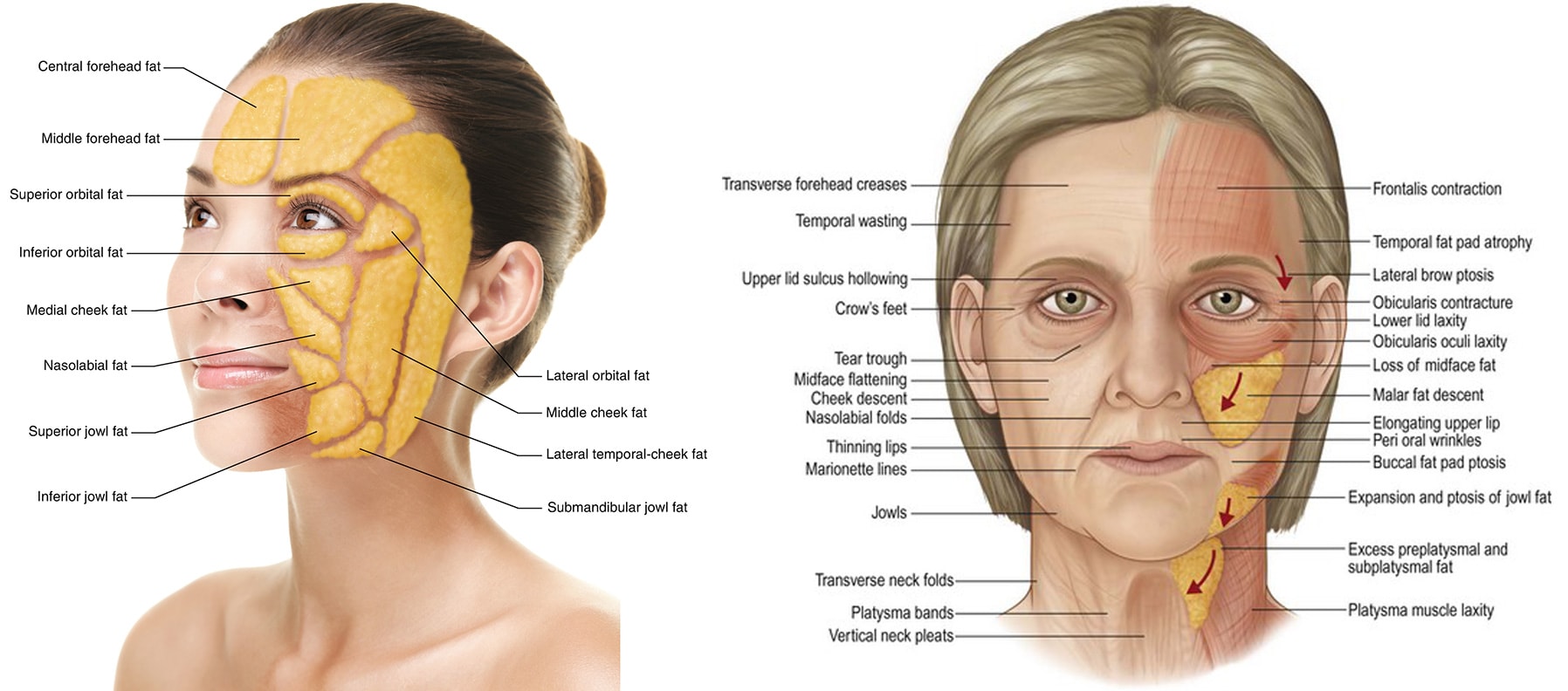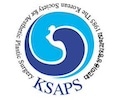Anatomy and ideal proportion :
A young face is defined by an overall “V” or inverted triangle shape given by full cheeks, prominent and high cheekbones with an upward and outward orientation of oblique shadow areas, associated with a well-defined facial oval.
Mechanism of facial aging:
Facial aging is due to sagging of the skin and stretching of the various structural ligaments, but also due to sagging of the musculoaponeurotic system (SMAS). The face sinks downwards with the appearance of nasolabial folds and jowls. This loss of elasticity leading to sagging skin is combined with a melting of the various fatty areas of the face over time, which leads to a loss of support.
Therefore, over time, the structure of the cheek and cheekbone tends to descend towards the nasolabial folds. The cheek triangle can be brought up and lateralized either with tensor threads or surgically with a malar lift.
Technique :
Tensor threads:
Local anesthesia, micro-incision of 0.5 mm close to the hair. Insertion of absorbable sutures, which run in tunnels under the skin to the scalp and the tension is adapted. The procedure is performed under local anesthesia, the principle is to make a long tunnel so that the thread has a wide grip and holds longer and to anesthetize the entire path of the tunnel for maximum comfort of the patient, the procedure thus takes 45 to 60 minutes.
Surgery:
Subcilar incision (2 mm under the lashes) and 3-4 cm scar at the temple, hidden in the scalp. Take-off of the deep plane in contact with the bone to release all the cheek attachments, then traction of this structure along an oblique and lateral vector and suspension of the cheekbones in the air of non-absorbable threads at the bone.
Results:
Time frame final results:
Sutures: after a social eviction of 24-48h, one can see immediately the result with a hypercorrection of a few mm then to see the final result it is necessary to wait approximately 1 week.
v hypercorrection for 2 weeks, 3 weeks to see a significant result, 2 to 5 months to see the final result
Longevity of results :
Thread: 6-12 months
Surgical: permanent
Before surgery :
Smoking must be stopped 1 month before the operation (risk of skin necrosis is important if you smoke)
Do not take Aspirin 10 days before surgery, inform Dr. Lucas of any anticoagulant medication (Sintrom, Coumadin, Eliquis, etc..) to arrange for its discontinuation or replacement.
Take Arnica capsules 5 capsules 5 times a day for 5 days before surgery to prevent hematoma.
Intervention :
Pain: the pain during the intervention will be almost non-existent, with an adapted anesthesia
Duration of the procedure: 60 minutes for medical / 90 minutes for surgical
Anesthesia: local for medical / local with sedation or general for surgical
Location: office for medical / operating room for surgical
After surgery:
Post-operative pain: 1/10 often responding to Dafalgan
Social eviction :
24-48h (swelling) for wires / 2-3 weeks (hypercorrection, hematoma and swelling) for surgical
Resumption of work: 24-48h for sons / 3 weeks for surgery
Resumption of sports: 7 days for sutures / 3 weeks for surgery
Instructions:
Bed rest without major effort (which can cause the opening of small vessels during effort and lead to a hematoma) for 48 hours
Ice for 1 week, as often as possible, to reduce swelling
Arnica capsules 5 times a day for 5 days after surgery to prevent hematoma
Stop smoking permanently to prolong the effect and minimize complications
Surgery :
Control Dr Lucas D1, D2, D7, 3 weeks, 3 months, 6 months, 1 year
Removal of the threads at 7 days
Sun protection with an index greater than 50 for 6 months following surgery.
Follow-up of the scar by Dr. Lucas for 1 year after surgery is essential.
Threads:
Preventive antibiotic Augmentin 1 g twice a day for 3 days after surgery
Disinfection with spray twice a day for 3 days at the entry point of the thread.
Control Dr Lucas D7, 3 weeks, 3 months
Complications
Tensor threads:
-Secondary displacement of the thread: the thread, if stimulated too strongly during the 7 days following the procedure, may come off.
Nerve or vessel damage: the installation of tensor threads must be carried out by a doctor with a good knowledge of anatomy, with whom the risk of nerve damage is almost non-existent.
-Hematoma: there may be bruising, which generally disappears within 4 to 5 days maximum.
-Asymmetry
– Discreet folds of the skin: this sometimes happens when the eyebrow has to be significantly raised or when there is a lack of flexibility in the tissues. These folds will disappear in 7 days on average.
– Infection: often treated with antibiotics and local care. Exceptionally, it is necessary to remove the sutures when the infection is not controlled despite the previous measures.
Surgical:
-Hematomas: they may require evacuation if they are large or too painful.
-Infection
Unsightly scars: they can only concern external scars (when they exist) and are only very rarely so unsightly as to require a touch-up.
-Skin damage: although rare, they are always possible, often because of the nasal splint. Simple wounds or erosions heal spontaneously without leaving any trace, unlike skin necroses, which are fortunately exceptional, and often leave a small area of scarred skin.
-Asymmetry
-Ectropion (retraction of the lower eyelid) is possible in this type of surgery. This complication remains rare, but its proper management is necessary to prevent any risk of ocular complications (irritation, inflammation, dryness). A tendency to round eyes can also be observed.
-Nerve damage: in particular, paralysis of the temporal branch of the facial nerve responsible for raising the eyebrow. This results in an impossibility of raising the eyebrow with an asymmetry on both sides. This asymmetry is most often temporary and botulinum toxin injected into the other eyebrow makes it possible to obtain, if the patient so desires, symmetry during the recovery period. However, in some cases, it can be permanent.
– Loss of sensitivity of an upper hemi-lip is sometimes observed. It is most often reversible.














